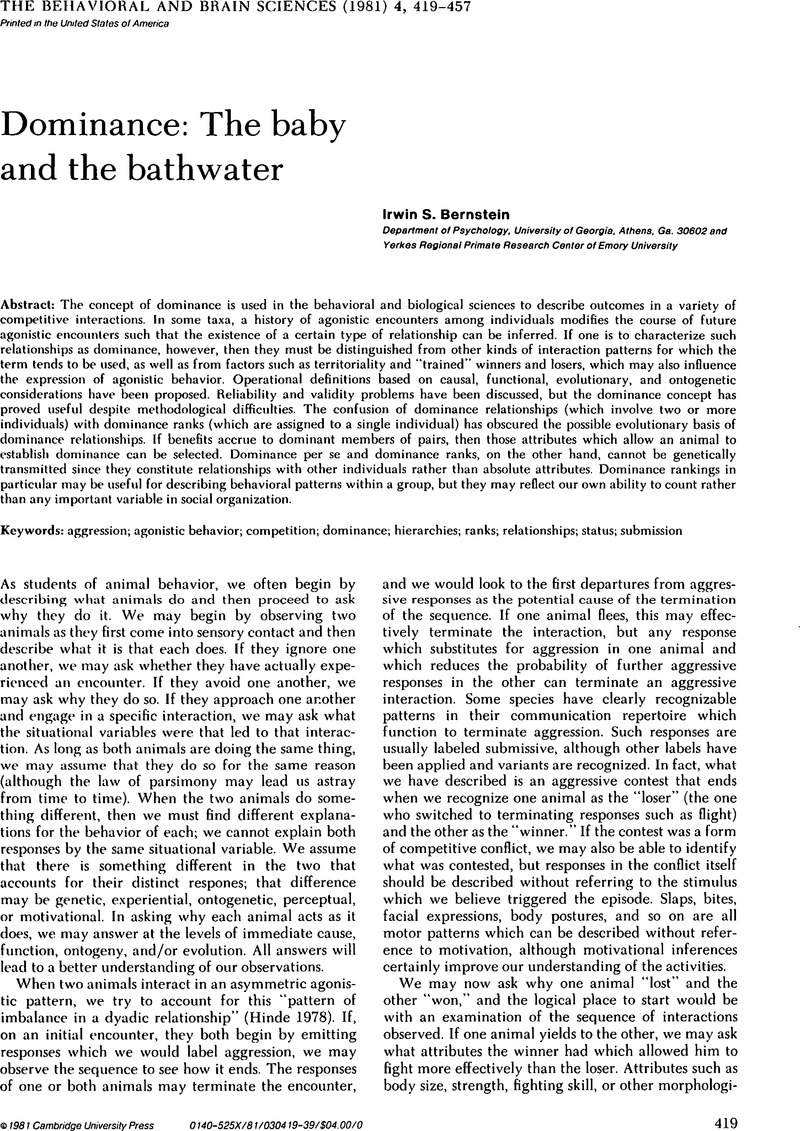Crossref Citations
This article has been cited by the following publications. This list is generated based on data provided by Crossref.
Mitchell, G.
and
Maple, Terry L.
1985.
Power, Dominance, and Nonverbal Behavior.
p.
49.
Rhine, Ramon J.
Cox, Roberta L.
and
Costello, Michael B.
1989.
A twenty‐year study of long‐term and temporary dominance relations among stumptailed macaques (Macaca arctoides).
American Journal of Primatology,
Vol. 19,
Issue. 2,
p.
69.
Oliveira, Rui F.
and
Almada, Vitor C.
1996.
On the (in)stability of dominance hierarchies in the cichlid fishOreochromis mossambicus.
Aggressive Behavior,
Vol. 22,
Issue. 1,
p.
37.
Despret, Vinciane
2009.
Quand les mâles dominaient....
Ethnologie française,
Vol. Vol. 39,
Issue. 1,
p.
45.


